The Power of Transition Words
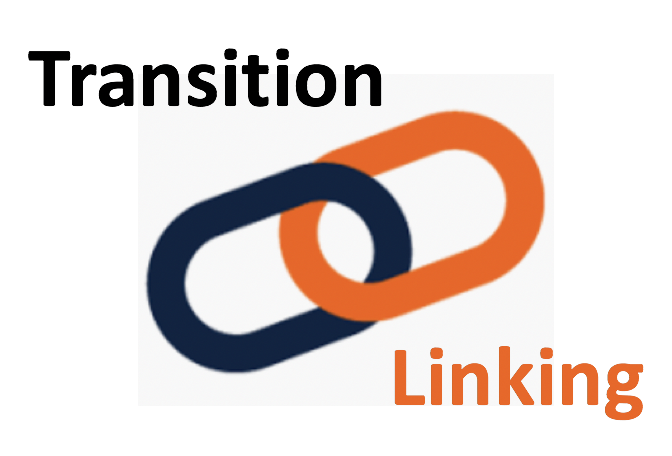
What are transition words and phrases? Sometimes called linking words, transitions connect sentences, paragraphs and sections of text. They also allow us to connect ideas when we speak. Instruction about transitions supports student reading and writing. When students are aware of transitions while reading, they provide powerful clues to support comprehension. When students include transitions when writing, the message and ideas they want to convey are clear and organized.
Many students with weak language and literacy skills do not automatically recognize transitions, understand what many of these words/phrases mean, or know how to use them when speaking or writing. All students benefit from explicit instruction about transition words/phrases, especially those who struggle with reading and writing. Also, teachers of all subjects, across all grades, can play a role in teaching transitions. Here are some instructional suggestions:
- Make lists of transitions available to students by hanging classroom posters or distributing handouts of transitions lists. A visual of a poster available from Keys to Literacy is shown below.
- Identify and take advantage of opportunities to show how transitions are used in the text students read.
- Encourage students to use transitions when they write, including making the inclusion of them part of the grading requirements.
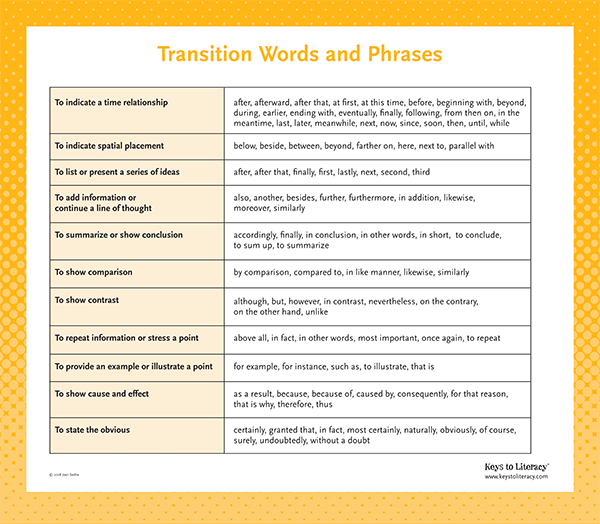
Figure A is a list of transitions that I have been distributing to teachers and students for over 40 years. Click here to access a copy of this list. Figure B is a modified list for students in primary grades. Click here to access this list. Figure C is a list of transitions that are especially helpful when students are writing an argument piece. Click here to access this list.
In a post from 2017, I wrote about five common Patterns of Organization that authors use in informational and narrative text and the transition words and phrases that are often used to signal the pattern of organization. The visual below presents these patterns and includes related transitions. Reading comprehension is supported when students are taught to attend to the transitions that signal these patterns. Likewise, student writing will be enhanced when they purposely use these patterns of organization in their writing and include transitions to signal them.
In conclusion, (notice how I used this transition to let you know that I am ending this blog post!) remember the value of these often overlooked words and phrases. A little bit of instruction and practice can go a long way towards improving student reading comprehension and writing!
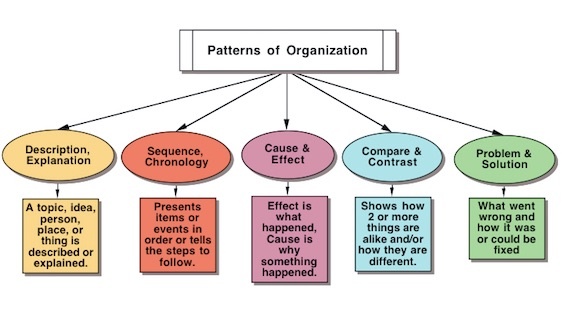
Figure A
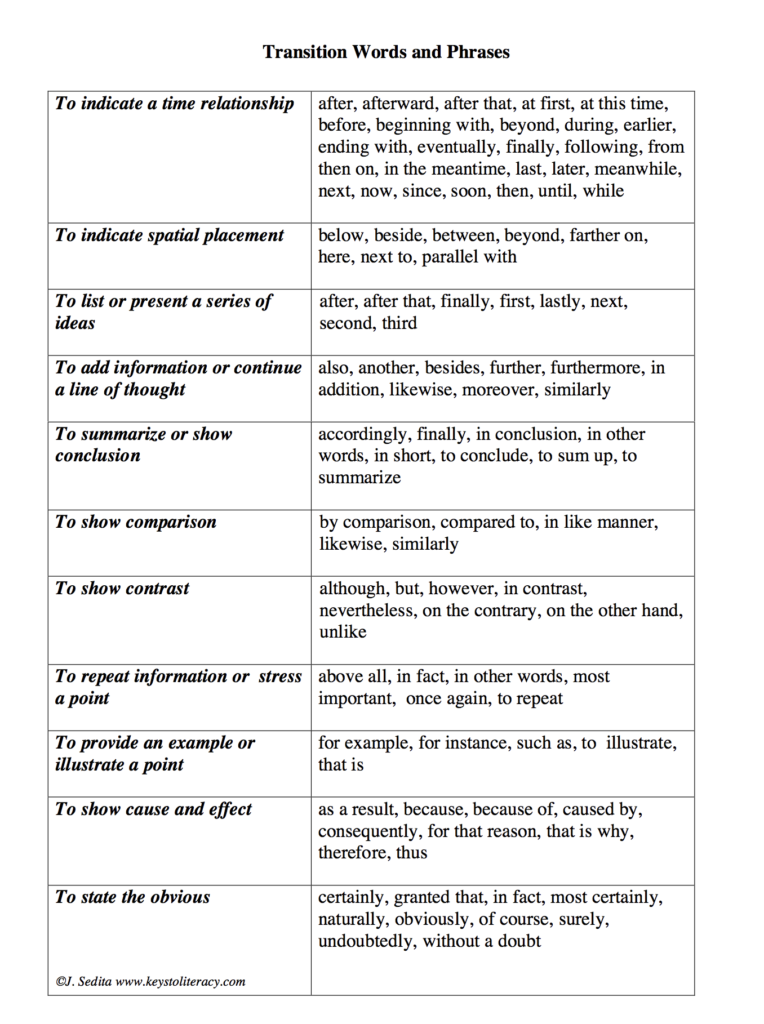
Figure B

Figure C
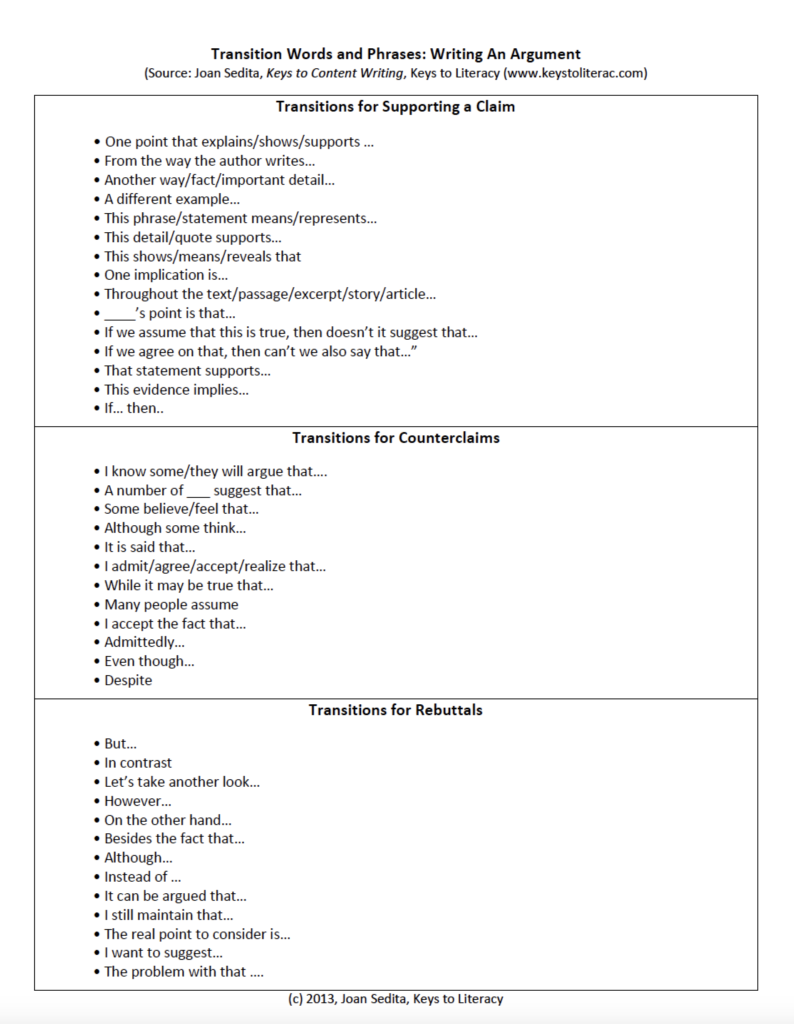

 Joan Sedita is the founder of Keys to Literacy and author of the Keys to Literacy professional development programs. She is an experienced educator, nationally recognized speaker and teacher trainer. She has worked for over 35 years in the literacy education field and has presented to thousands of teachers and related professionals at schools, colleges, clinics, and professional conferences.
Joan Sedita is the founder of Keys to Literacy and author of the Keys to Literacy professional development programs. She is an experienced educator, nationally recognized speaker and teacher trainer. She has worked for over 35 years in the literacy education field and has presented to thousands of teachers and related professionals at schools, colleges, clinics, and professional conferences.
Thanks for sharing! Didn’t know transition words have so much power! Truly useful.